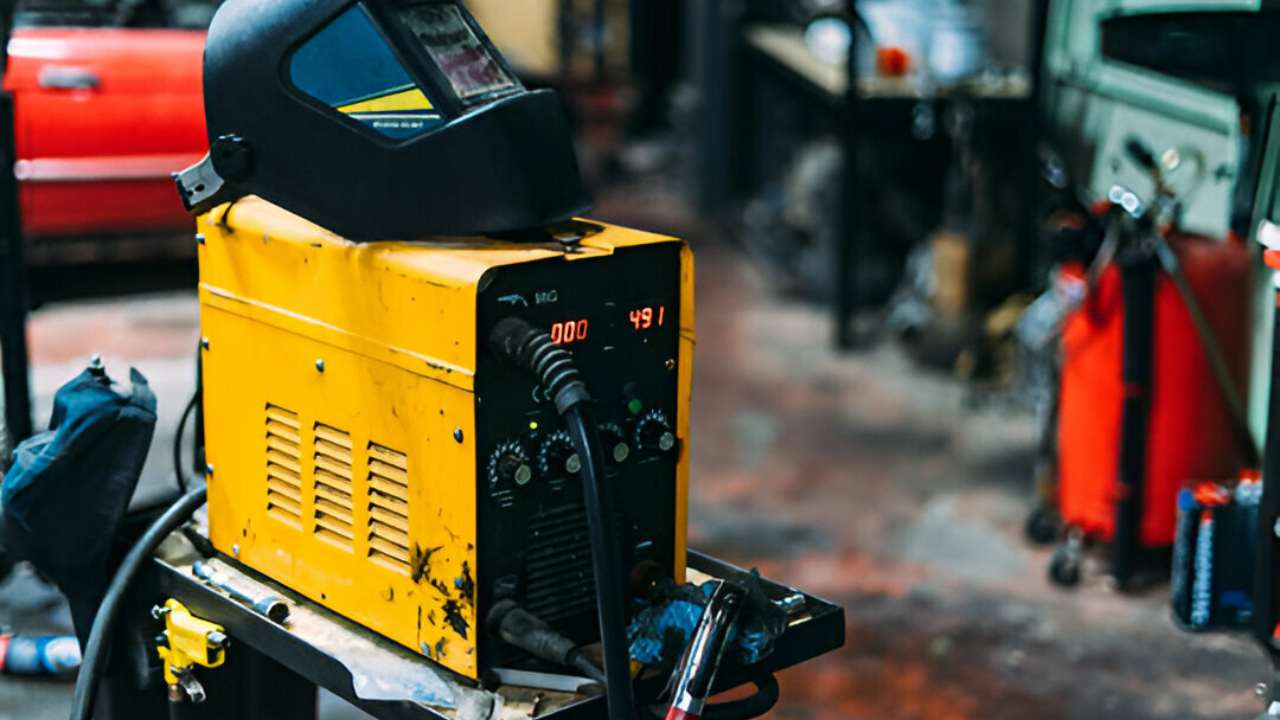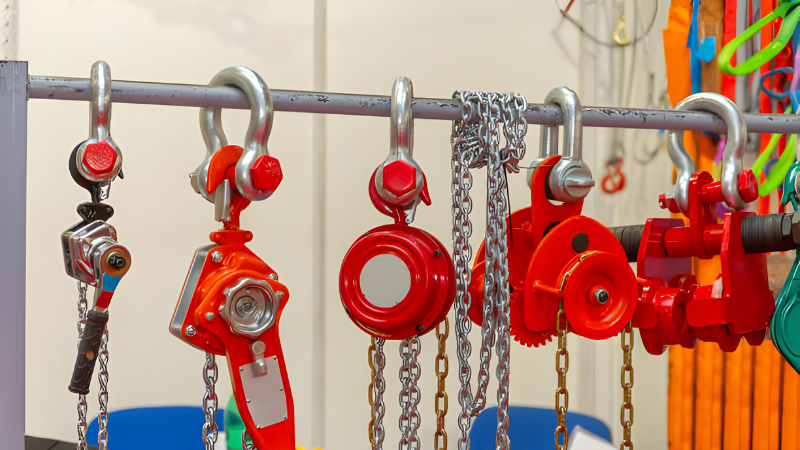Do you want to melt and join several pieces of metal? A MIG (Metal Inert Gas) welder is an excellent tool for indoor and outdoor welding projects. It's a sub-category of Gas Metal Arc Welding (GMAW), which uses electricity to melt and join different pieces of metal.
MIG welders can weld metals like silicon bronze, stainless steel, carbon steel, copper, aluminium, nickel, etc. They can also weld horizontally, flat, or in a vertical position. In this article, we evaluated the six handpicked MIG welders available in Australia to help you decide.
Our Top Picks
Here are our top three MIG welder picks in Australia:

Rossi MIG-220N
Best inverter welder with 240V, 20-220 Amp output, a twin-roller drive system, built-in safety features, and hard-wired components for stability.

Unimig U11006K VIPER
Best single-phase MIG Welder with 240V, 30-165 Amp, synergic MIG control, 10A plug, and STICK and TIG welding applications.

Dynamic TL-WM130NG
Best budget MIG welder with 240V, 130Amp, self-shielding gasless flux wire, and SAA and Safety Australian Standard certification.
Top 6 MIG Welders for Aussie DIYers
We shortlisted the options below based on their performance, durability, user-friendly features, and value for money. We also considered customer feedback, expert opinions, and industry standards to ensure each MIG welder meets quality and reliability standards.
1. Rossi MIG-220N
Best Inverter Welder in Australia

Power: 240V; 20-220Amp
Functions: MIG; STICK; TIG
Weight: 14 kg
The Rossi MIG-220N is our top pick. This all-in-one welder uses a Semi-Zener iGBT inverter technology that offers continuous current rectification for improved efficiency. Instead of running on an AC power source, it converts AC to DC, generating more power while using less energy.
The Rossi MIG-220N's super-compact design makes it portable. Its current range is 20 to 220 Amps and is powered by 240 volts, enabling diverse welding applications and materials up to 4.0 mm thick. For safety, the industry-standard DIN sockets and automatic shutdown system for overload and overheating protection enhance the convenience of use.
The inclusion of quick-connect brass fittings for TIG and MMA connections simplifies the setup process. The welder has a comprehensive set of accessories and a user manual with straightforward setup and operation instructions. You also get a face shield, TIG pouch, and a range of cords and leads. The welder can handle cast iron, stainless steel, and steel.
Pros
- Inverter technology
- Handles MIG, TIG, MMA, ARC, and Stick welding
- Twin-roller drive provides superior wire feeding
- Has overload and overheating protection
- Hardwired parts improve stability
Cons
- Included accessories not very durable
2. Unimig U11006K VIPER
Best Single Phase MIG Welder

Power: 240V Single Phase; 30-165Amp
Functions: MIG; TIG; Stick
Weight: 9.8 kg
Single-phase MIG welders are preferable for home handyman tasks, car panel repair, general fabrication, onsite maintenance and repair, or structural steel welding. The Unimig U11006K VIPER is a cost-effective and practical option if you want a welder for any of these tasks. It's lightweight, portable, and a suitable alternative to heavy machinery that requires a 3-phase power supply.
Like the YesWelder, Unimig's VIPER has a synergic MIG control to adjust the wire feed speed and welding power. You can pre-program the machine by selecting the appropriate wire type and size. Then, change the amperage of the welder to suit your workpiece. It's a multi-process machine offering three welding functions: STICK, MIG, and TIG welding applications.
With this machine, you don’t have to worry about power sources. Single-phase power is available in many commercial and residential settings. The 10-amp plug is compatible with most domestic outlets, making the machine versatile for DIY home handypersons. We recommend Unimig's welder for small-scale mild steel, aluminium, and stainless steel welding.
Pros
- Synergic MIG Control allows
- Plugs into most standard outlets
- Works with gasless and gas-shielded MIG wire
- Suitable for a wide variety of materials
- Multiple welding functions
Cons
- Lower current than 3-phase welders
3. Unimig Viper 185
Best Gas MIG Welder

Power: 240V Single Phase; 30-180Amp
Processes: MIG; STICK; TIG
Weight: 12 kg
The Unimig Viper 185 gas MIG welder is a multi-process, inverter welding device for copper, aluminium, silicon bronze, cast iron, mild steel, stainless steel, and other sheet metal. It can also do metal inert gas, stick, and TIG welding. Its power source has a 10 Amp domestic plug, making it ideal for home workshops and DIY projects.
Like most MIG welders, VIPER 185 supports gas-shielded and gasless wires. The shielding gas ensures that oxygen from the surroundings doesn't reach the welding point. The gas also prevents contaminants from affecting the weld’s quality, ensuring no spores or uneven surfaces. The device also has stepless voltage and amperage controls and features wire inch and burn-back adjustment for easy setup and precise control.
Unimig's Viper 185 is also spool gun ready; thus, you can use thinner, softer wires like aluminium. The spool gun also allows for quick switching between different MIG welder setups. You may need to change the polarity or adjust the drive rollers, but the process is more efficient. Overall, the VIPER 185 is a powerful and adaptable welding machine with a user-friendly design.
Pros
- Shielding gas for minimal loss
- Spool gun eliminates wire kinking
- Thermal overload protection
- Multi-process machine
Cons
- Shielded gas setup is tedious
4. Weldclass WeldForce WF-160MST
Best 10 Amp MIG Welder

Power: 240V; 160 Amp; 10A Plug
Functions: MIG (Gas/Gasless); TIG; Stick
Weight: 9 kg
The Weldclass WeldForce WF-160MST is a triple-process welding machine with a 10A plug. It has a lightweight construction, weighing only 9 kg, which makes it easy to transport from the workshop to the worksite. Its 10A plug allows you to use this machine in a home or industrial setting. Thus, it suits home workshops, mobile operators, and DIY enthusiasts.
This high-performing lightweight welder boasts two digital readout LCDs for convenience. Next to the display are two knobs for infinitely variable voltage and wire speed. The welding machine also features polarity reverse, which is perfect for gas and gasless MIG welding. It has a maximum recommended MIG welding capacity of 6 mm mild steel.
The Weldclass WeldForce WF-160MST can weld with 0.9 mm gasless or solid steel wire. It has 0.8/0.9 mm drive rollers for gas and gasless wires. The Weldclass WF-160MST welder takes 1 kg (D100mm) or 5 kg (D200mm) spools. It comes with a 12-month warranty.
Pros
- 10 Amp plug for mobile use
- Lightweight, compact, and easy to transport
- Layer wound ensures smooth wire feeding
- Premium industrial-grade build
- Multiple processes
Cons
- Relatively pricier
5. Weldclass WeldForce WF-141GL
Best MIG for Beginners

Power: 240V; 140Amp; 10A Plug
Processes: MIG
Weight: 6 kg
The Weldclass WeldForce WF-141GL is the best small MIG welder in Australia. At 6 kg, it is incredibly lightweight and portable. This machine can produce up to 140 amps of output at a 15% duty cycle.
That’s enough amperage to give you a decent weld on a 4mm sheet metal with 0.8mm or 0.9mm gasless wire. This machine allows impressive arc control at low amps when working on thinner materials.
Weldclass's WF-141GL has intuitive digital readouts for amperage and voltage. Thus, you can conveniently monitor voltage and amperage before and during welding. The MIG welder is also semi-synergic with a bottom control knob in the front of the machine that adjusts your voltage and wire speed simultaneously, while the top knob does fine-tuning.
Pros
- Semi-synergic for ease of use
- Lightweight and compact machine
- Large carry handle for easy transportation
- Comes with a 10A plug for home use
- Built-in amperage display
Cons
- Only supports MIG welding
6. Dynamic TL-WM130NG
Best Budget MIG Welder

Power: 240V; 130Amp
Functions: MIG Welding
Weight: 16 kg
The Dynamic TL-WM130NG is an affordable MIG welder that can meet your home and repair needs. It is certified by the SAA Cert and Safety Australian Standard, so it’s one of the safest on the market.
We recommend it for thinner materials like mild and galvanised steel. Its high travel speed ensures smooth arc action, smooth weld edges, full slag coverage, low spatter, easy slag removal, and reduced risk of burn-through.
Dynamic's TL-WM130NG uses a gasless flux wire that is self-shielding. It forms a strong shield around the weld to prevent oxidation. As a result, you don’t have to move and connect separate gas tanks. Likewise, you can weld even when windy without worrying about interference with the shielding gas away. And even better, the spatter produced by the gasless flux core is easy to clean.
Pros
- Stepless wire feed adjustment
- Excellent on mild and galvanised steel
- High safety standards
- Budget-friendly
Cons
- Gasless flux core isn't included
Gas vs. Gasless MIG Welder
The main difference between gas and gasless MIG welders is the shielding gas. In gas MIG welding, an external gas (generally an ArCO2 mix) protects the weld pool from the atmosphere and other contaminants. However, access to an industrial-grade gas tank can be difficult in remote locations or outdoors.
Moreover, environmental factors like wind can blow across the shielding gas, potentially causing porosity in your welds. In such situations, a gasless MIG welder, which uses a flux-cored wire that transforms into vapours to protect the weld pool, can be a better choice. Gasless MIG welders are known as 'self-shielded' welders because they don't need an external gas cylinder.
Lastly, there is the cost-effectiveness factor to consider. Gasless flux wire isn’t as efficient. Therefore, you will often need more gasless wire than gas-shielded wire. Additionally, gas-shielded wire is cheaper, but you will have to incur the cost of procuring an industrial-grade gas tank.
How to Choose the Best MIG Welder?
Choosing the best MIG welder involves carefully considering several factors to ensure it meets your specific needs and preferences. Here are three key points to consider in your decision-making:
- Type of Metal: The type of metal you will be welding is a crucial factor. For instance, carbon steel can handle a lot of heat and is forgiving when a novice welder applies too much heat. On the other hand, stainless steel requires less current due to its lower thermal conductivity.
- Welder's Features: The features of the welder can greatly impact its performance. Some welders are versatile and can weld with more than one welding process. It's also important to consider the power output, duty cycle, and the torch/gun of the welder.
- Your Skill Level and Needs: Your skill level is not nearly as important with MIG welders, but you'll require at least an hour of practice if you're new. Therefore, consider your skill level and the specific needs of your projects when choosing a MIG welder.
Here's our rule of thumb: the right welder for you must meet your specific needs and circumstances. Thus, it's always a good idea to thoroughly research and consider all factors before deciding.
Frequently Asked Questions (FAQs)
Here are some frequently asked questions about MIG welders.
Are gasless MIG welders any good?
Yes, gasless MIG welders are good for certain applications. They are known for their ability to weld thicker metals, including those with rust, dirt, or paint, and they offer higher productivity and portability than gas MIG welders.
Gasless MIG welders can be used outdoors or in windy conditions without contaminating the weld pool. However, they may produce more spatter and slag than gas MIG welders, and the amount of smoke and fumes produced during welding is also higher.
What are the two types of MIG wire?
The two main types of MIG welding wire are solid and flux-cored.
- Solid wire is used in the GMAW (Gas Metal Arc Welding) process and requires shielding gas, such as a 100% CO2 or a 75% Argon / 25% CO2 mixture for mild steel. It's used for welding mild steel, stainless steel, and aluminum. Solid wire produces good-looking beads, less spatter, and very good penetration.
- Flux-cored wire is a metal electrode that contains a flux compound inside the electrode. When the wire melts and reacts with the welding arc, this forms a gas that protects the weld from oxygen, which can cause defects in the weld. A flux-cored wire is known for its ability to weld in windy conditions or on dirty or rusty material.
The choice between these two types of wire depends on the specific project and individual preferences.
What gas is needed for MIG welding?
The type of gas needed for MIG welding depends on the material being welded. The most common gases used are:
- Mild Steel: A 75% argon/25% carbon dioxide mix (sometimes referred to as “C25 gas”) is very common for welding mild steel. Another gas used for mild steel is 100% carbon dioxide, sometimes called C100.
- Aluminum: The most common gas used for MIG welding aluminum is 100% argon.
- Stainless Steel: A 90% Argon/10% Carbon Dioxide mix is often used for stainless steel.
Remember, your shielding gas choice significantly impacts the weld quality, arc behavior, productivity, and costs. So, it’s vital to pick the correct gas for the job at hand.
Which is better, MIG or flux?
The choice between MIG and flux core welding depends on the specific project and individual preferences.
- MIG welding is known for its versatility and is suitable for thin and thick metals. It produces fine-looking welds, less spatter, and very good penetration. However, it requires an external shielding gas, which can be a significant ongoing expense.
- Flux core welding is often more cost-effective as it eliminates the need for an external shielding gas. It's well-suited for outdoor welding tasks since it isn’t as susceptible to wind and environmental conditions. Moreover, it tends to be faster than other welding methods, thanks to its high heat output. Still, the flux compound often leaves slag that must be cleaned off after welding, which can be time-consuming.

Conclusion
Choosing the right MIG welder ensures you can quickly and efficiently tackle home, office, or professional welding projects. A reliable welder simplifies your work, making it more productive and enjoyable.
So, whether you're a beginner, a DIY enthusiast, a passionate hobbyist, or a seasoned professional, we hope one of these options is the perfect match for your welding requirements.








